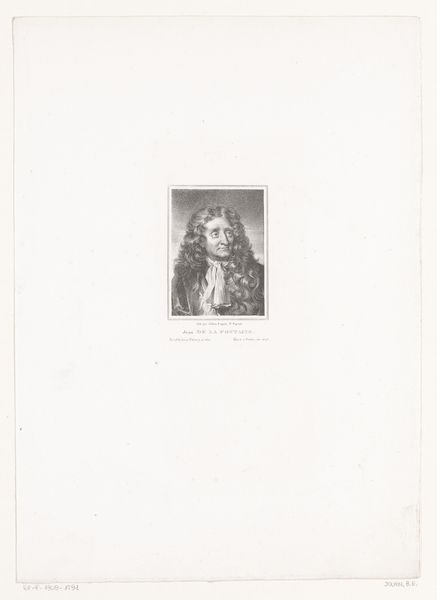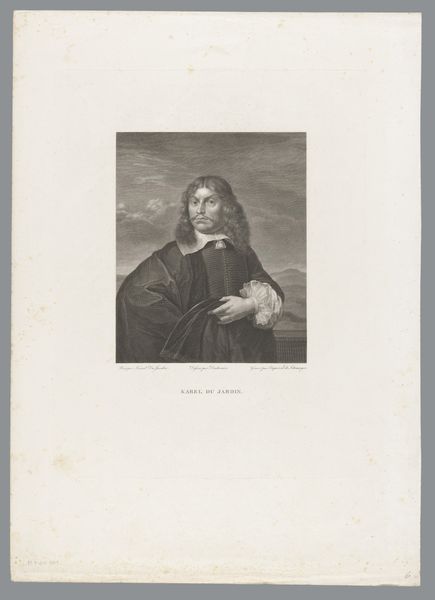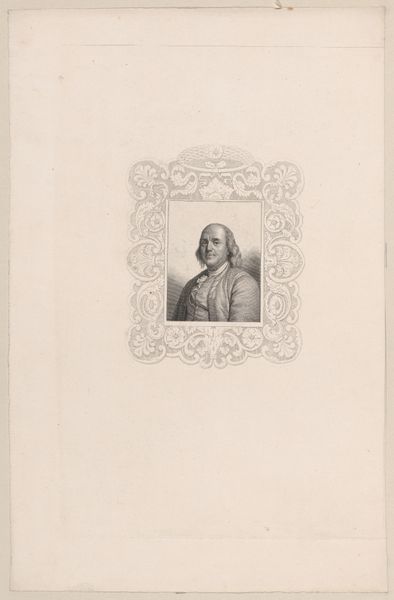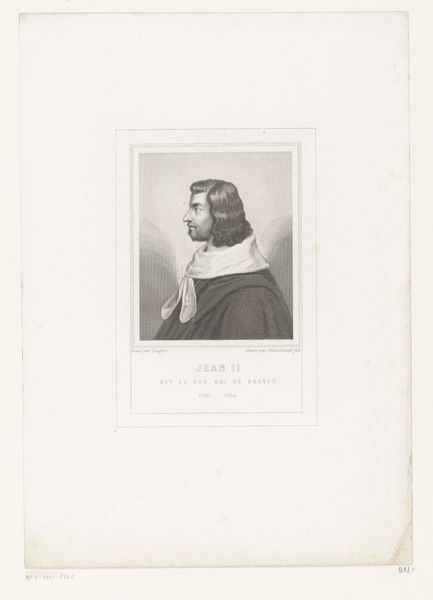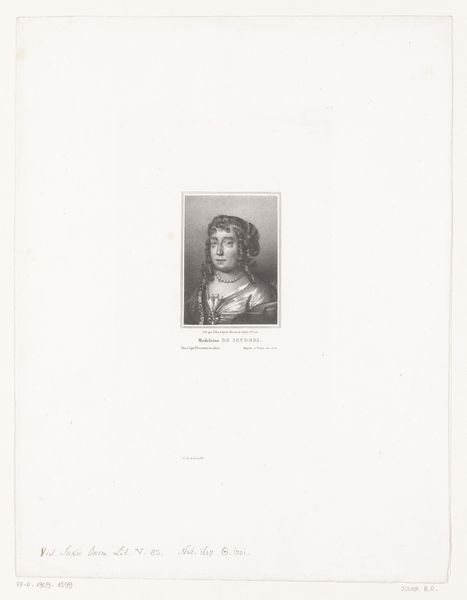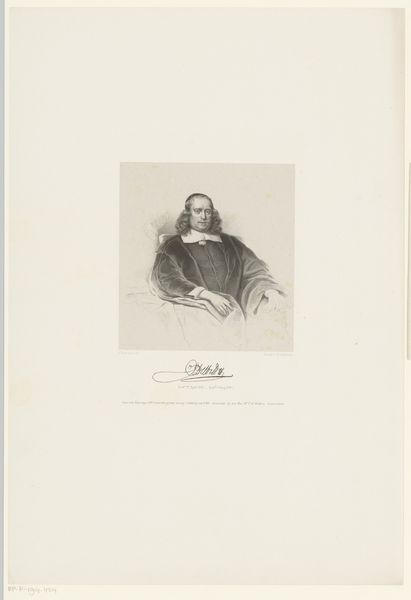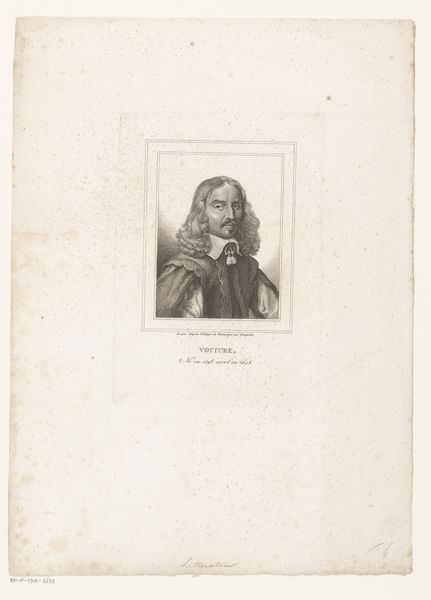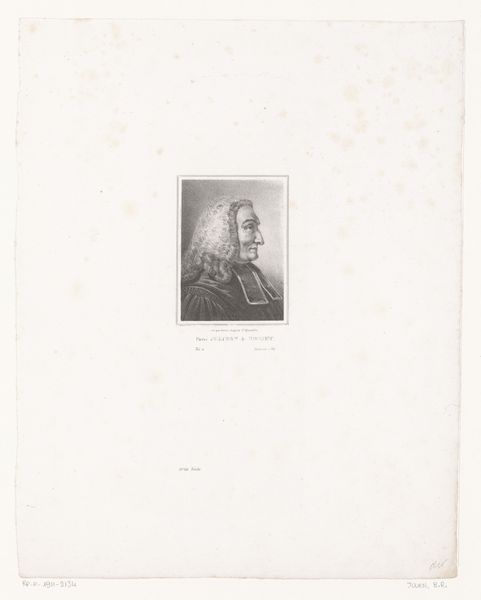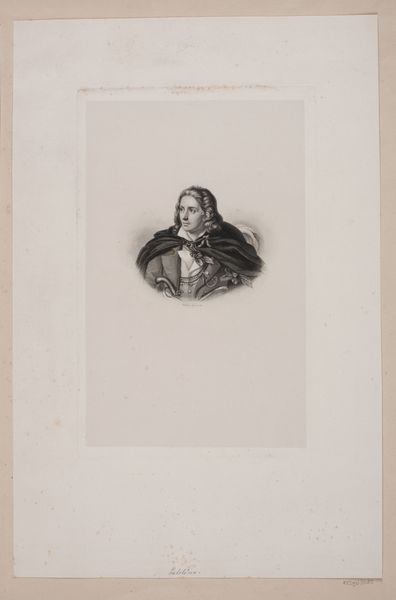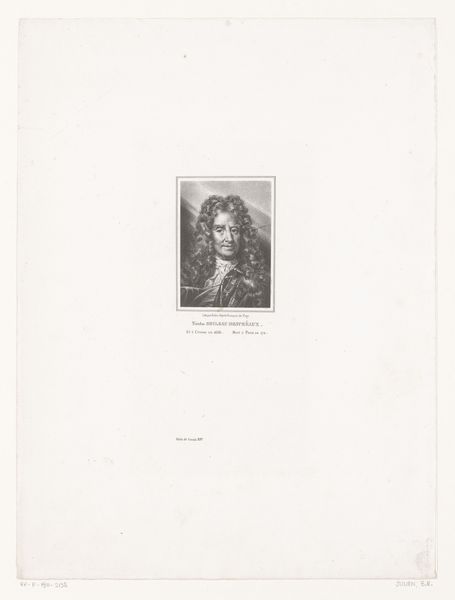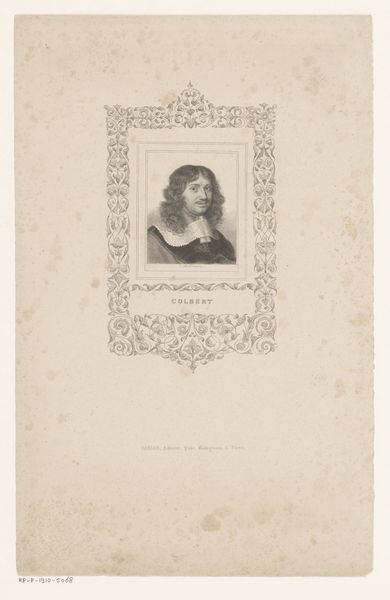
#
portrait
#
neoclacissism
# print
#
watercolor
Dimensions: height 318 mm, width 238 mm
Copyright: Rijks Museum: Open Domain
Curator: Wow, this portrait gives off such a stoic, almost haunting aura. I feel a distinct sense of the weight of history just by looking at it. Editor: Absolutely, this is "Portret van Albéric Clément" created between 1838 and 1841, crafted by Joseph Rebell, falling neatly into the Neoclassical movement and demonstrating traits typical of that style, through a printmaking approach. Curator: Neoclassical makes total sense, now that you say it. The calculated restraint, the deliberate composition… Do you notice the detail in his eyes? It feels almost photographic despite predating photography! It seems like a bit of the old portrait tradition. What do you make of that stern gaze and rigid shield? Editor: It’s a fascinating depiction. Albéric Clément, as a historical figure, presents complex intersections of power and loyalty during a turbulent period. Rebell's piece offers us a sanitized vision, one that echoes classical ideals while navigating Clément’s participation in political maneuvers with violence. His association with problematic power structures would inevitably need examination through the critical eye of intersectionality to dismantle art history biases and patriarchal narratives that continue in such portraits. Curator: Yes. The composition is intriguing as well. I mean, you've got the subject himself taking center stage but is half cut off so the artist shows what Albéric holds. I find myself asking what narratives were the focus during the creation and its later display in art houses. Also the water coloring must be noted and credited for its role in enhancing the character's depth. Editor: This tension you noticed also represents a kind of ideological battleground. The deliberate idealization and promotion through these visual displays—is always the creation of heroes by authorities, that must also address the less desirable qualities and activities to create more accurate portraits. These classical structures can reveal cultural narratives of dominance while inviting nuanced analysis. Curator: Right. Seeing beyond the first glance means not only engaging with art history, but also critically examining how these figures shaped political environments while assessing lasting ramifications to achieve fair representation. Thanks. Editor: Certainly, art possesses a great ability for unveiling social norms and cultural conventions while prompting meaningful cross-sections and re-thinking how society structures its realities.
Comments
No comments
Be the first to comment and join the conversation on the ultimate creative platform.
